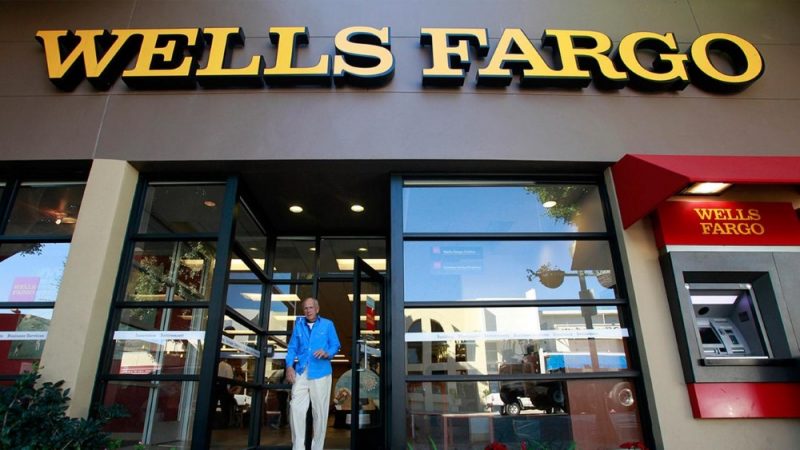US : Wells Fargo management prodded on expenses after profit decline

Top Wells Fargo & Co (WFC.N) executives were grilled by analysts on Friday about whether they’re doing enough to control expenses after the bank reported a drop in second-quarter profit.
Like its big bank peers, Wells Fargo has been challenged by a prolonged period of historically low interest rates, which only fell further in the second quarter.
Even as the San Francisco-based lender extended more loans, its profits fell 3.5 percent because it has started setting aside more money for possible losses in the future.
Revenue growth was not enough to offset those increased provisions, as well as higher costs elsewhere. The expense line was boosted by standard operating costs like compliance and personnel, as well as investments in things like biometric scanners and technology to approve loans more quickly.
Wells Fargo’s shares fell 3 percent in afternoon trading following the results.
At least five analysts asked Chief Executive John Stumpf and Chief Financial Officer John Shrewsberry about those operating expenses during a conference call on Friday, and whether they can come down any further.
Though Wells Fargo is at the high end of a cost-efficiency range that management has set out, the two executives argued that costs are necessary for either day-to-day business or long-term investments that will pay off.
“A lower for longer (interest rate) scenario puts pressure on everything that we do,” Stumpf responded to one analyst who acknowledged he might be “beating a dead horse” by asking again about costs.
“We are not going to do something that is short-term bright, long-term dull just because of pressure on the revenue side or the earnings side,” Stumpf continued. “We will continue to work really hard on … taking out costs that don’t add value.”
Wells, the third-largest U.S. bank by assets, reported net income applicable to common shareholders of $ 5.2 billion in the second quarter, down from $ 5.4 billion a year earlier. Revenue rose 4 percent to $ 22.2 billion.
Earnings per share slipped to $ 1.01 from $ 1.03, matching the average analyst forecast, according to Thomson Reuters I/B/E/S.
Wells Fargo’s second-quarter results compare to better-than-expected profit declines of 1 percent at JPMorgan Chase & Co (JPM.N) and 14 percent at Citigroup Inc (C.N). All three banks described healthy loan growth in their core businesses, and largely blamed low rates for the profit declines.
When rates get too low, the gap between what it costs a bank to obtain funding and what it can earn from investing or lending tends to narrow. Wells’ net interest margin – which measures interest income as a portion of assets – declined on both an annual and quarterly basis.
Banks have tried to keep a handle on expenses to offset the impact of low rates. Wells Fargo management has said the bank will keep expenses as a portion of revenue, known as an efficiency ratio, in a range of 55 to 59 percent this year. In the second quarter, its efficiency ratio was 58.1 percent.
The industry is also lending more to boost income, a sign of strength for the U.S. economy. Wells reported loan growth across commercial loans, auto loans, credit cards and residential mortgages. Stumpf noted that consumer spending on “big-ticket items was especially robust” during the quarter.
Wells Fargo’s $ 950.8 billion worth of average loans during the quarter was 9 percent above the year-ago and 3 percent higher than the prior period.
It was the 16th consecutive quarter of loan growth for the San Francisco-based bank. But with that growth has come the need to boost reserves against loan losses that are possible in the future.
Wells’ provisions for loan losses of $ 1.1 billion more than tripled from the year-ago quarter, and were 49-percent higher than the first quarter. The bank said its overall credit quality was “solid,” with the exception of its oil and gas portfolio, which has come under pressure due to the decline in energy prices.
Wells Fargo is the biggest U.S. mortgage lender, but faced some particular challenges in that business.
Its mortgage banking revenue fell 17 percent even amid a wave of new business. The decline came from its mortgage-servicing portfolio, where hedges on the direction of interest rates were less effective, and where the bank also faced higher costs.
Up to Thursday’s close, Wells Fargo’s stock had dropped about 10 percent since the start of the year, but it remained the most highly valued U.S. bank.
Although Wells’ results were generally in line with expectations, Oppenheimer analyst Chris Kotowski said they were “an indication of how difficult revenue growth is to come by.”









